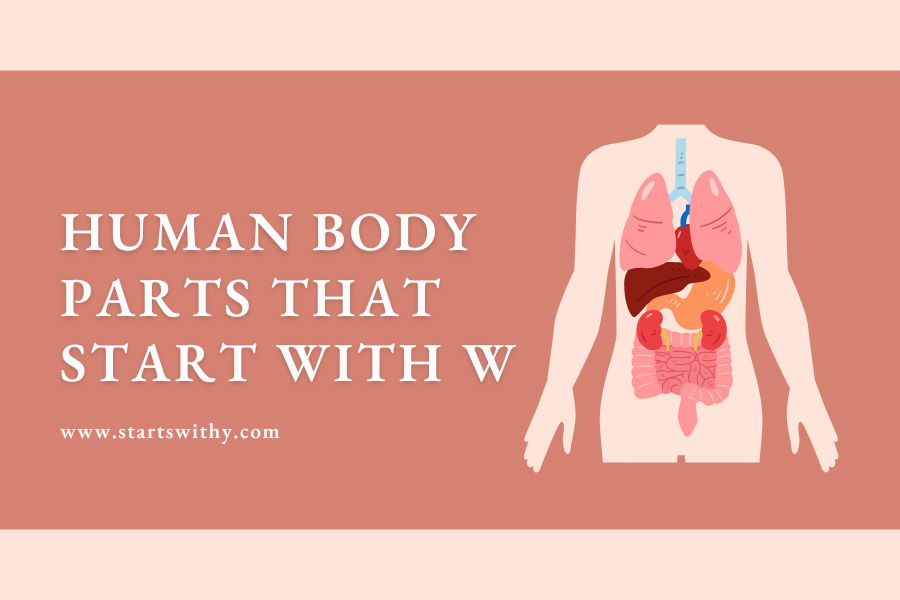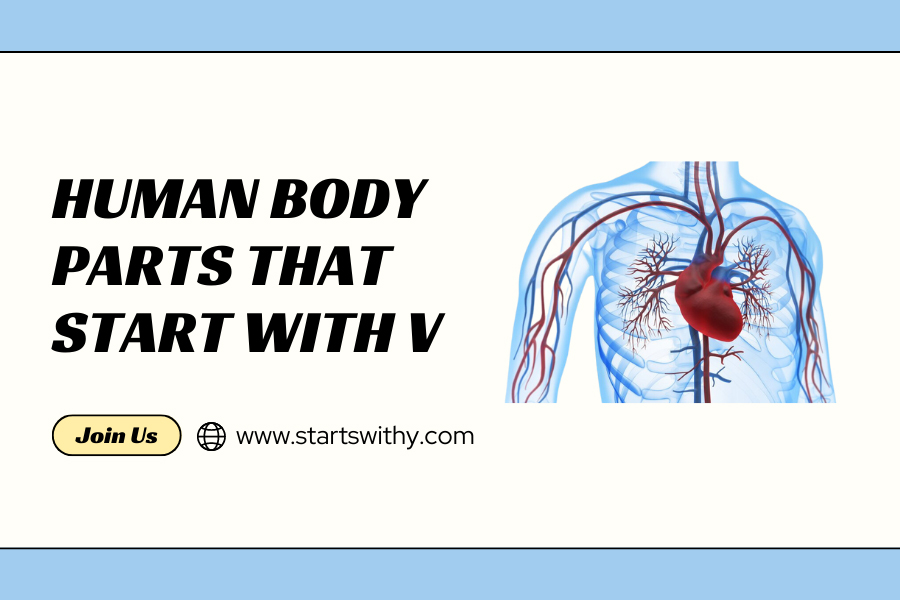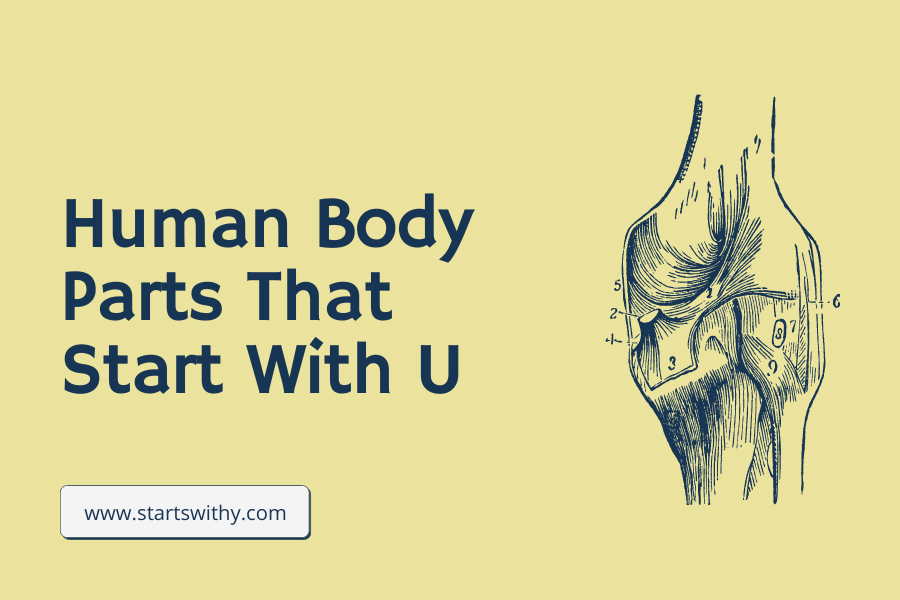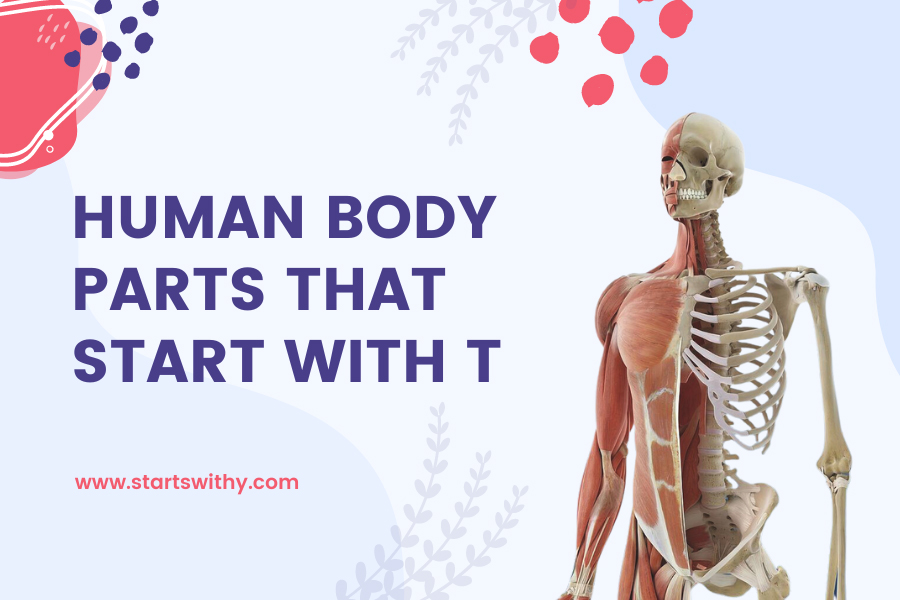Navigating the vast and intricate landscape of human anatomy, each letter of the alphabet opens a door to a distinctive realm of structures and their intertwined stories. When we approach the letter ‘W’, the list might seem concise, but the importance and intricacies of the body parts it represents are profound.
This article is an invitation to journey through the ‘W’-highlighted components of our anatomy. From the weight-bearing wonders of our wrists to the whispering winds of our windpipe, we’ll explore the nuanced roles and fascinating functions of these structures. Embark on this focused exploration and discover the pivotal, yet often overlooked, facets of the human body that proudly bear the prefix of the letter “W.”
Human Body Parts That Start With The Letter W
The human anatomy, in its entirety, is an intricate, vast, and stunningly organized system. Each section and segment has its unique purpose, ensuring the smooth operation of the whole. As we progress through the anatomical alphabet, some letters provide a plethora of structures, while others give us an opportunity to delve deeper into fewer, yet vital, components.
The letter “W” in the realm of human anatomy is concise, but its components are pivotal to our daily function and overall well-being. Let’s wander through the world of body parts that commence with the letter “W.”
Waist
While not a specific anatomical structure, the waist refers to the part of the body between the rib cage and hips. It’s a region of major importance as it houses several vital organs, including portions of the digestive system and the kidneys. The waist’s size and shape can vary among individuals and may change over time due to factors like diet, exercise, and genetics.
The Wrist: Tiny Titans of Dexterity
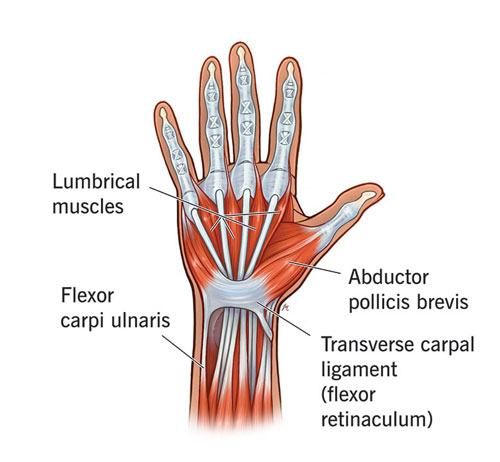
Nestled between the hand and forearm, the wrist might seem like a small joint, but don’t be fooled by its size! Packed with eight tiny carpal bones, two long bones (radius and ulna), and a complex network of ligaments and tendons, the wrist is a marvel of engineering, enabling a mind-boggling range of hand movements.
Think about it: from tying your shoelaces to writing your name, flipping pancakes to catching a ball, the wrist is the silent maestro behind countless everyday miracles. Its flexibility allows for:
- Bending: Bringing your hand towards your forearm (flexion) and away from it (extension), like waving hello or doing a push-up.
- Rotating: Turning your hand palm up or palm down, crucial for writing, opening jars, and countless other tasks.
- Tilting: Moving your hand side to side (radial deviation and ulnar deviation), helpful for gestures like waving goodbye or holding a tennis racket.
With over 27 tiny bones per wrist, that’s more bones than in your entire foot! And yet, these delicate structures can handle impressive forces. The average adult wrist can withstand up to 20 kilograms of pressure, making it strong enough for everyday activities like carrying groceries or lifting a child.
However, this intricate network of bones and ligaments is also susceptible to injury. Sprains, strains, and even fractures can occur from falls, sports injuries, or repetitive strain. So, remember to teach your kids to listen to their bodies, practice good posture, and take breaks from repetitive activities to protect these incredible “tiny titans” of dexterity.
Fun facts for kids:
- Did you know your wrist’s pulse is called the radial pulse? You can feel it by gently pressing your fingers on the inside of your wrist, near your thumb.
- The world’s strongest man, Brian Shaw, can reportedly squeeze a gripper with over 400 kilograms of force, putting immense pressure on his wrists!
- Some animals, like owls and chameleons, have incredibly flexible wrists that allow them to rotate their hands almost all the way around.
By understanding the amazing capabilities and vulnerabilities of the wrist, we can appreciate its crucial role in our daily lives and take steps to keep it healthy and happy!
Wrist Muscles: The Hidden Heroes of Hand Power
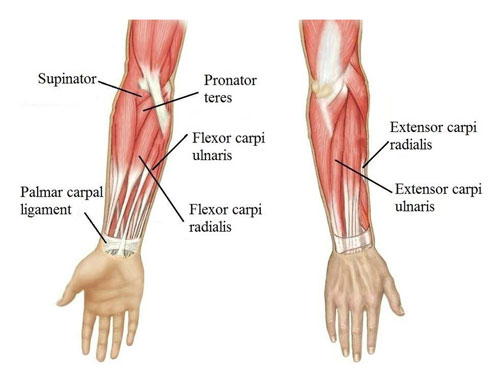
Have you ever considered the silent powerhouses behind your every flick of the wrist, graceful wave, or mighty grip? We often overlook the unseen heroes, and the eight incredible muscles hidden within your wrist deserve some well-deserved applause!
These tiny titans work tirelessly in two main teams: the flexors and the extensors. The flexors, like the flexor carpi radialis and flexor carpi ulnaris, bend your hand towards your palm – think fist bumps and high fives. The extensors, like the extensor carpi radialis longus and brevis, do the opposite, straightening your hand – imagine pushing yourself up from a plank.
But their superpowers go beyond simple bending and straightening. These muscles also allow for intricate movements like turning your palm up or down (radial and ulnar deviation), tilting your hand side to side, and even the delicate precision needed for writing or playing an instrument. With over 20 tendons connecting these muscles to the various bones of your hand and forearm, it’s like having a mini orchestra of movement happening inside your wrist!
Remember, just like any team, these muscles need care and attention. Overuse or repetitive strain can lead to pain and discomfort. Encourage your kids to listen to their bodies, take breaks during activities, and stretch their wrists regularly to keep these hidden heroes happy and healthy.
Fun facts for kids:
- Did you know that your wrist is home to more bones than your entire foot? That’s 8 carpal bones working together with the radius and ulna to create this flexible joint.
- The strongest muscle in your wrist, the extensor carpi radialis longus, can generate enough force to lift several kilograms! Just imagine the power behind a high five from a strong friend!
- Some animals, like chameleons and parrots, have incredibly flexible wrists that allow them to rotate their hands almost all the way around. Imagine trying to write or eat soup with hands like that!
By appreciating the amazing work of the wrist muscles, we can learn to use our hands with care and understand the incredible teamwork happening within our bodies every day. So, give your wrists a wiggle and a thank you – they deserve it!
The Wrist Joint: A Master of Movement
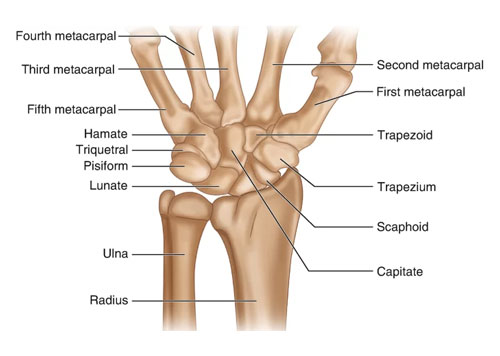
The wrist joint, often overlooked, is a marvel of engineering, packing incredible flexibility and dexterity into a small space. It’s where your forearm and hand meet, allowing you to perform countless everyday tasks, from tying your shoelaces to writing, throwing, and catching. Let’s delve into this fascinating joint and discover its secrets!
Imagine the wrist joint as a sophisticated hinge, formed by the distal ends of the radius and ulna (forearm bones) meeting the eight carpal bones (wrist bones). These bones are arranged in two rows, creating a condyloid joint, which means it allows for both bending and tilting motions. Think of it like a ball-and-socket joint with an oval-shaped socket, providing more gliding movement than a perfect sphere.
This clever design grants the wrist an impressive range of motion. It can flex (bend inward), extend (straighten), abduct (move thumb side away), adduct (move thumb side towards), and even circumduct (make circular motions). With over 27 bones and ligaments contributing to its movement, the wrist joint is one of the most flexible in the human body!
So, next time you reach for a glass of water, wave hello, or tie your hair, take a moment to appreciate the incredible feat of engineering that is your wrist joint. This remarkable little hinge allows you to interact with the world in countless ways, making it a true unsung hero of the human body!
Here are some fun facts about the wrist joint to share with your kids:
- The smallest bone in the human body, the stapes, is located in the middle ear and is only about the size of a grain of rice!
- The strongest muscle in the human body is the masseter, located in the jaw and responsible for chewing.
- The human brain contains about 100 billion neurons, which is more than all the stars in our galaxy combined!
Wrist Ligaments: The Tiny Powerhouses of Your Wrist
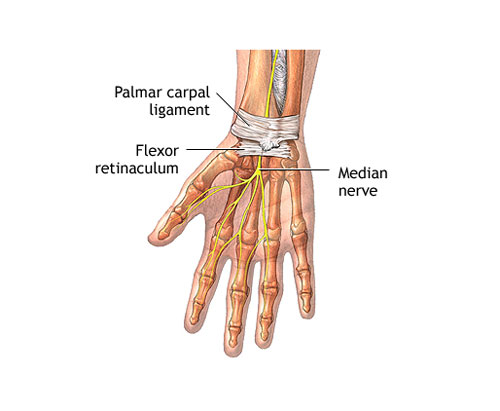
Have you ever stopped to think about how your wrist can bend and twist in so many ways, yet stay strong enough to hold onto a heavy backpack or swing a jump rope? That’s thanks to the amazing wrist ligaments, tiny but mighty bands of connective tissue that play a crucial role in your wrist’s movement and stability.
Imagine your wrist as a bustling train station, where eight carpal bones (your wrist bones) are like train cars, and the ligaments are the tracks that keep them connected and moving smoothly. There are over 20 of these ligaments, each with a specific job. Some, like the scapholunate ligament, connect the scaphoid and lunate bones, forming a crucial link for side-to-side wrist movement. Others, like the palmar radiocarpal ligament, act like strong rubber bands on the palm side, preventing the wrist from bending backward.
These tiny powerhouses are constantly working behind the scenes, allowing you to do everything from writing and drawing to throwing a ball and catching a frisbee. But just like train tracks, they can sometimes get damaged. Sprains and tears are common wrist ligament injuries, often caused by falls or sudden twists. If you ever experience wrist pain, swelling, or weakness, it’s important to see a doctor to get your ligaments checked out.
Remember, even though you can’t see them, your wrist ligaments are essential for keeping your hands strong and flexible. So next time you marvel at your amazing wrist movements, give a silent thank you to these hardworking little heroes!
Here are some fun facts about wrist ligaments to share with your kids:
- The carpal tunnel, a narrow passageway in your wrist, is formed by some of the wrist ligaments. It protects important nerves and tendons that control your hand.
- The strongest ligament in the wrist is called the triangular fibrocartilage complex (TFCC). It helps stabilize the three wrist bones that connect to the thumb.
- Even though they’re small, wrist ligaments can be surprisingly strong. Some can withstand forces up to 200 pounds!
I hope this information helps you and your students learn more about the amazing wrist ligaments!
Wisdom Teeth
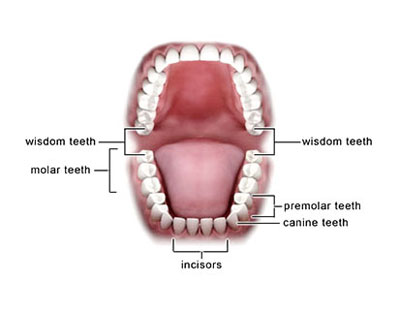
Also known as third molars, wisdom teeth are the last set of molars that typically emerge in late adolescence or early adulthood. Historically, they played a role in our ancestors’ diets, which consisted of rougher foods that led to excessive wear on teeth and potential tooth loss. However, with modern diets and dental care, these teeth often become problematic. Many people undergo extraction procedures due to impaction, misalignment, or limited space in the mouth.
Weaver’s Bottom
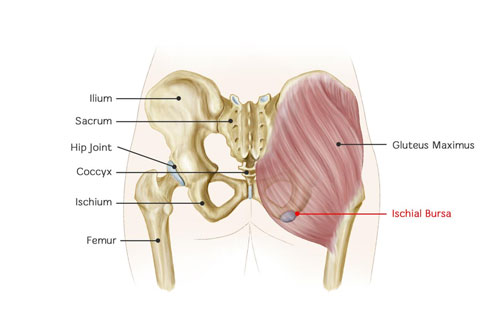
This term isn’t a distinct body part but rather a colloquial name for a condition. “Weaver’s bottom” or “ischial bursitis” refers to the inflammation of the bursa (a small sac filled with fluid) located between the ischial tuberosity (a bony protrusion at the bottom of the pelvis) and the tendons of the hamstring muscles. Historically, weavers would sit for prolonged periods on hard surfaces, leading to this condition, hence the name.
List of Human Body Parts Starting with W
| Wrist | Wrist Joint, Movements | Wrist Ligaments |
| Wrist Muscles | Wisdom Teeth | Waist |
| Weaver’s Bottom |
Conclusion
The “W” in our anatomical exploration might be brief, but it encompasses regions and structures of great significance. From the dexterity of our wrists to the evolutionary remnants of our wisdom teeth, each element starting with “W” holds a unique place in our physiology. Our bodies are marvels of nature, with each part, no matter how seemingly small or inconspicuous, playing a role in the grand orchestra of our existence. As our journey continues through the remaining letters of the anatomical alphabet, we’re reminded that even in the concise chapters, there are tales of wonder, adaptability, and evolution waiting to be told.
Human Body Parts That Start With
A | B | C | D | E | F | G | H | I | J | K | L | M | N | O | P | Q | R | S | T | U | V | W
